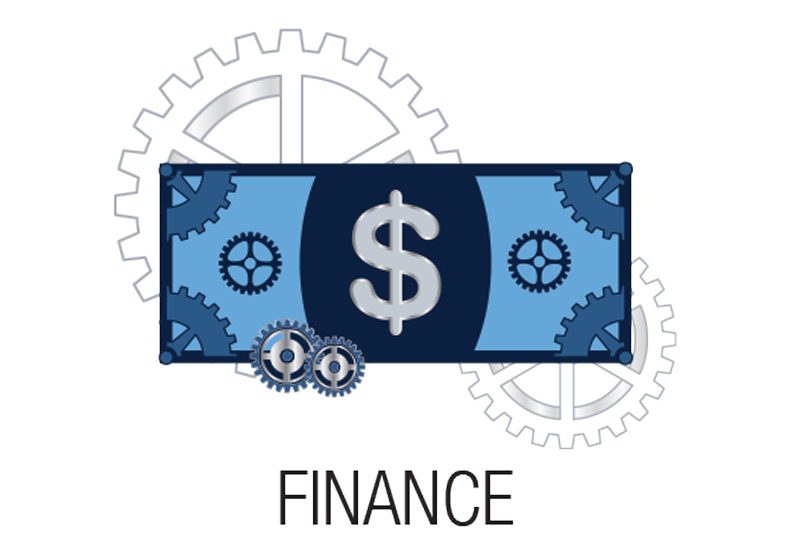
Home » INW financial institutions are optimistic for strong 2022
INW financial institutions are optimistic for strong 2022
Interest rate hikes likely as inflation woes persist

December 16, 2021
Financial industry experts here say 2021 has been stronger than many institutions had expected, and that momentum could carry into 2022, especially if the Federal Reserve raises interest rates.
Steve Scranton, chief investment officer and economist at Washington Trust Bank, says, “When we started 21, a lot of people in the banking industry thought that this was going to be more of a reset year, of PPP loans getting paid off and (planning) where we go from here.”
Scranton says most institutions were prepared for declines in deposits and steady loan demand.
“Instead, what we’ve seen is the slow and steady loan demand played out, but these deposit balances haven’t gone down; in fact, they continue to grow,” he says.
Numerica Credit Union’s Greg Hansen, senior vice president of business and dealer services, says the industry has been spooked by the events of the past couple of years.
“We’re going on two years of COVID-driven economic changes,” Hansen says. “That uncertainty made us very cautious.”
Jamie Hudson, senior vice president and commercial banking market director for Eastern Washington and Idaho at Portland-based Umpqua Bank, says consumers and businesses are playing it safe, too, by hanging onto atypically high amounts of cash in bank and credit union accounts.
“We had unbelievably high deposit levels this year,” Hudson says. “Part of that is a little bit of security. Businesses want to hold onto a little cash as a buffer, which is wise. On the consumer side, most economists are predicting that some of that cash is going to get used as people start to loosen the purse strings a little.”
Scranton cautions that some institutions may be weighing high deposit volumes against lower loan volumes.
“You don’t have enough loan buy-in for all these deposits, so you’re forced to put it into government securities, which yield a whole lot less than loans,” Scranton says.
Hansen says Numerica’s loan production volume has exceeded expectations this year. Other aspects of the credit union’s balance sheet also have proven to be pleasantly surprising.
“Our delinquencies and charge-offs were far below budget,” Hansen says. “We were concerned about charge-offs going into 2021, but our charge-offs are at their lowest in my 10 years here.”
This year, the Federal Reserve’s federal fund rate, the benchmark loan interest rate, bounced between a low of 0.06% in May and a high of 0.1% in July. As of Dec. 1, the rate was .08%. Hudson says interest rates remain advantageous to borrowers.
“We’ve seen that (rate) climb in the last six months,” Hudson says. “But that’s climbing from incredibly low levels, unprecedented levels.”
With signs of inflation present in the economy, Hansen says the Fed is likely to increase rates next year.
“Traditionally, if we start seeing inflation in the economy, the Fed moves to bump up rates,” Hansen says. “I wouldn’t be surprised if we see that in 2022.”
Scranton says higher interest rates benefit banks by creating a wider profit margin between deposits and loans.
“The vast majority of banks are what’s called asset-sensitive. Their loans reprice faster than their deposits,” Scranton says. “When interest rates go up as loans mature, you’re making a new loan at a higher interest rate, and yet the deposit rates didn’t go up nearly as much.”
When interest rates rise, loan rates — which provide revenue for banks — increase, while deposit costs rise at a slower rate, Scranton says.
Smaller institutions are more likely to buckle under the pressure of low interest rates, which could lead to more mergers here, Scranton says.
Three mergers involving Spokane-area institutions have occurred in the past few months. They include Spokane Valley-based Horizon Credit Union’s planned merger with Embark Credit Union; Alaska USA Federal Credit Union’s merger with Spokane-based Global Credit Union; and Tacoma, Washington-based Columbia Banking System Inc.’s merger with Portland-based Umpqua Holdings Corp.
—Virginia Thomas
Latest News Special Report Banking & Finance
Related Articles
Related Products




